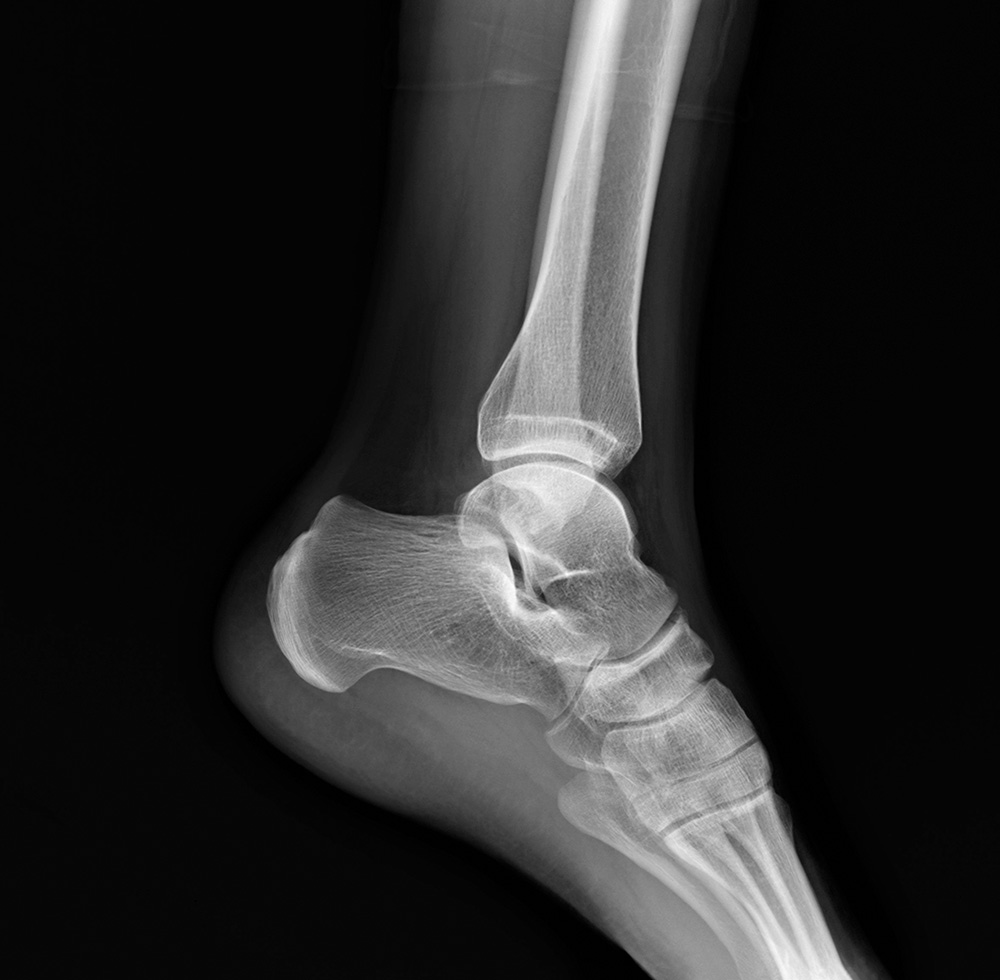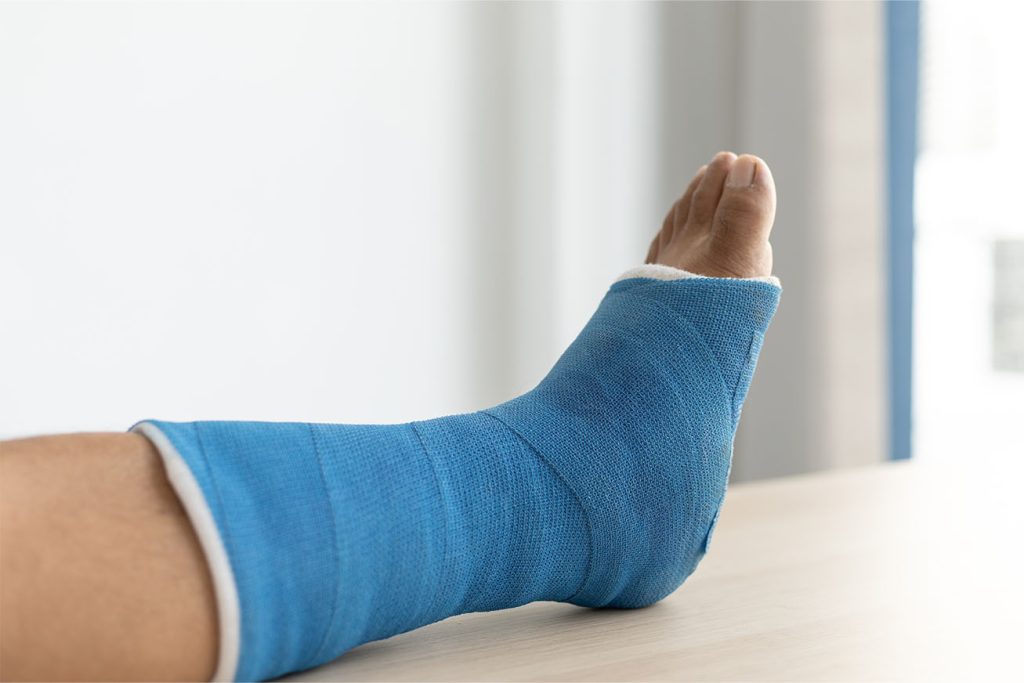Recover Stronger from Ankle Fractures with Specialist Care from Dr Tang Zhi Hao
Understanding ankle fracture and its causes
A fracture of the ankle happens when one or more of the bones in the ankle joint (the tibia or fibula) are cracked or broken.
This injury most often occurs when the ankle twists or rolls inward, commonly referred to as “going over” on the ankle. It is particularly common in sports such as basketball, soccer, and netball.
Ankle fractures can be grouped into two main types:
- Traumatic fractures ( more common )– Caused by a specific accident or injury.
- Stress fractures ( less common ) – An ankle stress fracture often develops after starting a new high-impact activity, like hiking, running, or field sports, or when an active person rapidly increases their exercise, such as training for a marathon after light jogging. It may also caused by an underlying deformity/malignment of the foot and ankle.


Common causes of ankle fractures include:
- Direct impact, such as from a sudden fall or sport injuries
- Rolling or twisting the ankle
- Falling or tripping
- Rotating or turning the ankle abruptly
Complications and signs you should see a doctor
Any foot or ankle injury should be evaluated by a doctor in Singapore, as the pain from an ankle fracture can sometimes feel like a simple sprain. People with flat/high arch feet may also be more prone to twisting or injuring their ankles.
Common symptoms of a broken foot or ankle include:
- Sharp pain and tenderness
- Swelling and bruising
- Difficulty walking or bearing weight
- Visible deformity or blisters
- Bones protruding through the skin (in severe cases)
If you are experiencing persistent pain or difficulty moving your ankle, it is best to get a diagnosis from a doctor. Untreated ankle fractures can lead to complications such as:
- Bones healing incorrectly or not healing at all
- Chronic pain, swelling, or stiffness
- Long-term issues like ankle arthritis
- Nerve injury or, rarely, blood clots

Early treatment helps restore function, prevents long-term problems, and allows you to return to daily activities safely.

Diagnosing an ankle fracture
Common treatments for ankle fractures include:
The doctor will first discuss your medical history, symptoms, and how the injury occurred. Your doctor will then perform a thorough assessment of the ankle, foot and lower leg.
If a fracture is suspected, additional imaging tests may be ordered to better understand the injury:
- X-rays – The most common imaging technique, X-rays show whether the bone is broken, the number of fracture pieces, and if there is any displacement. X-rays of the leg, ankle, and foot may also be taken to check for other injuries.
- Stress Test – For certain fractures, the doctor may apply pressure to the ankle and take a special X-ray to determine if surgery is needed.
- CT scan – Provides detailed cross-sectional images of the ankle, especially useful if the fracture extends into the joint.
- MRI Scan – Produces high-resolution images of bones and soft tissues, such as ligaments, to check for associated injuries.
Treatment Options
Nonsurgical treatment
If the ankle fracture is stable and the bones remain in good alignment, surgery may not be necessary. Treatment usually involves applying a plaster cast, short leg cast, or a removable boot to keep the ankle supported while it heals. Patients are typically advised to avoid putting weight on the injured leg for around six weeks, though this period may be longer if healing is slow or if other health conditions, such as diabetes, are present.
Surgical treatment
If the fracture is unstable or the bones are out of place, surgery may be required to hold them in proper alignment. This is usually done using metal implants such as plates and screws.


Meet Our Experienced Foot & Ankle Specialist
Dr Tang Zhi Hao is a fellowship-trained orthopaedic surgeon, specializing in foot & ankle surgery as well as general orthopaedic surgery. He had graduated with a Bachelor of Medicine and Bachelor of Surgery (MBBS) with distinction in Biochemistry from the National University of Singapore (NUS) in 2006. In 2018, after completing his specialist training in Singapore, he attained his Fellowship with the College of Surgeons of Edinburgh and was accredited by the Specialist Accreditation Board (SAB). Under the Ministry of Health’s Health Manpower Development Plan (HMDP) programme, Dr Tang completed a clinical fellowship in foot and ankle surgery at Severance Hospital (Yonsei University Health System) in Seoul, one of South Korea’s largest hospitals, under the tutelage of Professor Jin Woo Lee, then President of the International Federation of Foot and Ankle Societies (IFFAS).
Why Choose Alpha Joints & Orthopaedics?

Personalised treatment for patients
of all ages

Commitment to exceed
patient expectation

Conveniently located in Farrer Park, Gleneagles, Novena and Orchard
Frequently Asked Questions
Most patients need crutches or another walking aid after an ankle fracture is diagnosed. If moving around is difficult, a physiotherapist can provide guidance on walking and stair navigation.
- For stable injuries, your doctor may allow weight-bearing to be tolerated.
- For unstable injuries, your doctor will determine if any weight can be put on the ankle. Strict non-weight bearing requires using the other leg to hop or using a wheelchair.
Recovery from an ankle fracture depends on the type of fracture and the treatment used. Your surgeon or care team will guide you on when it is safe to start bearing weight. Always consult your doctor before resuming weight-bearing, exercise, or other activities to ensure a safe recovery.
Healing times depend on the type and severity of the injury. Fractured bones typically take a minimum of six weeks to mend, though tendons and ligaments often require more time.
A sprain affects the ligaments, while a fracture is a break in one or more bones. Fractures usually cause more severe pain, may produce a snap or crack at the time of injury, can make the ankle look misshapen, and often make it difficult or impossible to bear weight. Swelling, bruising, and pain can occur with both injuries, but only a doctor, usually with an X-ray, can confirm the diagnosis.
Insurance Panel


Hospitals Accredited
Mount Elizabeth
Parkway East
Parkway Shenton
Day Surgery Centre Accredited
Novena
Novaptus
HMI
Discover Effective Solutions for Ankle Fractures
Book your appointment today and start your journey to pain-free movement.
Send us your enquiry – Our responsive team prioritises fast replies and aim to schedule appointments within the same week whenever possible.
